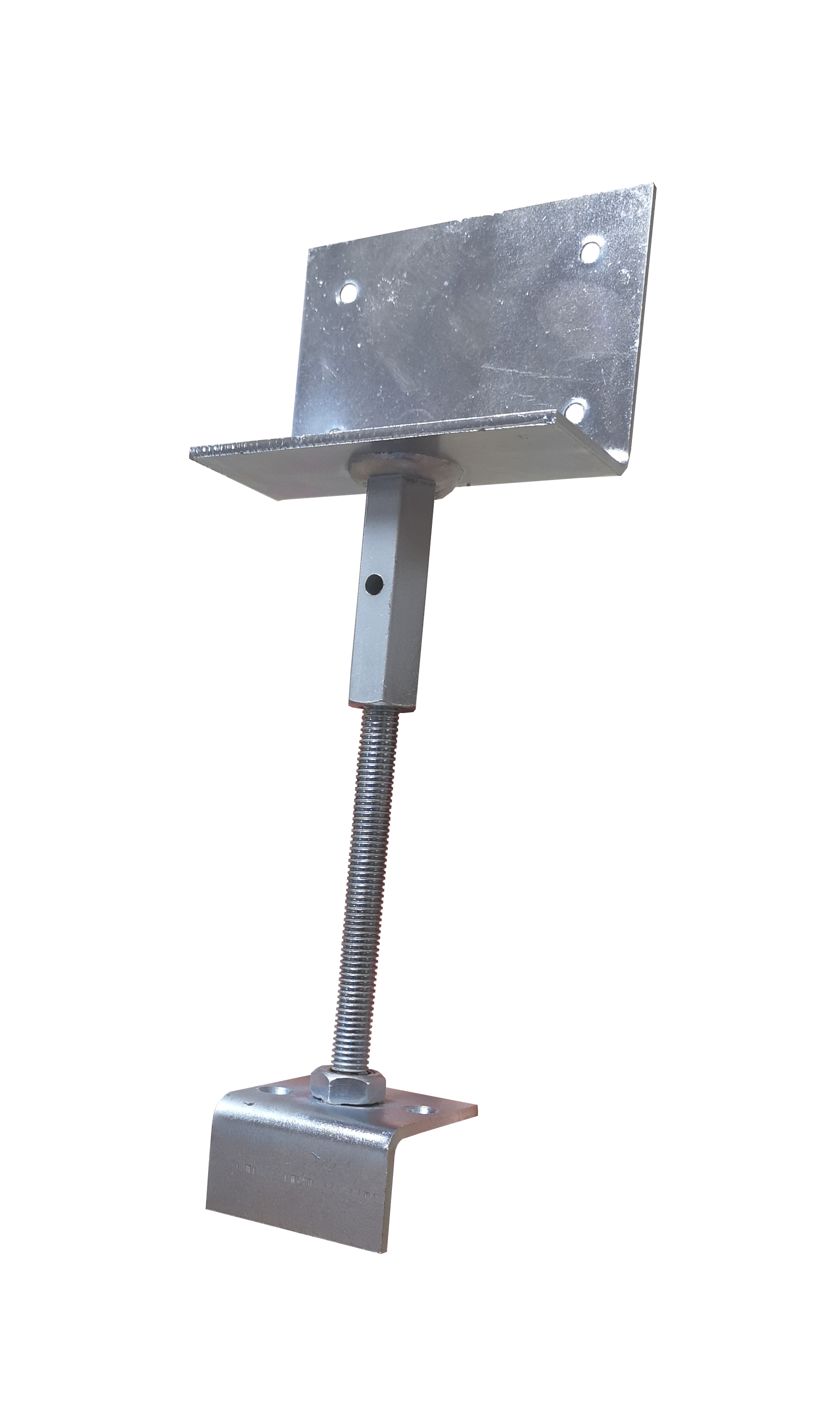WHAT IS LOFT-E®?
“Loft-E® Adjustable” refers to our proprietary metal loft leg system, which is an adjustable component used in our specialist loft storage installations in new build properties.
The Loft-E® Adjustable metal loft leg system is designed to provide a stable and secure platform for loft boarding where uneven joists or trusses are present, enabling homeowners to maximise their loft space for storage purposes. Unlike traditional loft storage solutions that rely on timber supports, the Loft-E® Adjustable leg offers superior strength, durability and Adjustability.
Overall, Loft-E® represents a cutting-edge approach to loft storage, combining strength, versatility, and durability to transform underutilised loft spaces into valuable storage areas for homeowners.
THE LOFT-E® METAL LOFT LEG SYSTEM OFFERS ADVANTAGES OVER PLASTIC ALTERNATIVES:
Strength and Durability: The Loft-E® metal loft leg system is engineered from robust metal materials, providing superior strength and durability compared to plastic alternatives. Its metal construction ensures that it can withstand heavy loads and maintain structural integrity over time, making it a reliable choice for long-term loft storage solutions.
Stability and Support: Metal construction offers enhanced stability and support for loft storage platforms compared to plastic alternatives. The Loft-E® system provides a solid foundation for loft boarding, ensuring a secure and stable storage area that can safely accommodate heavy items without the risk of sagging or instability.
Adjustability: The Loft-E® Adjustable offers something no other system offers. the ability to adjust the height of the leg itself without the need for shims and packing. the leg can be adjusted easily to get a strong, stable and level storage platform.
Longevity: Materials used in the Loft-E® leg offer greater resistance to wear, tear, and degradation compared to plastic alternatives. The Loft-E® leg is designed to withstand the rigors of loft storage environments, including temperature fluctuations and humidity, ensuring long-lasting performance and reliability.
Environmental Impact: Metal construction offers environmental benefits over plastic alternatives, as metal materials are typically more recyclable and have a longer lifespan. By choosing the Loft-E® metal system, homeowners can make a sustainable choice for their loft storage needs.

TESTING AT UNIVERSITIES:

University of Central Lancashire (UCLAN) Test Results:
Maximum Working Capability: The Loft-E® adjustable leg underwent thorough testing at the University of Central Lancashire (UCLAN) to evaluate its maximum working capability. Results indicated that the leg could withstand heavy loads, surpassing industry standards for loft storage systems. Through rigorous testing, the Loft-E® Adjustable leg demonstrated its ability to support significant weight, providing homeowners with a reliable and robust storage solution.
Lancaster University Test Results:
Stress and Thermal Simulations: Lancaster University conducted in-depth stress and thermal simulations on parts of the Loft-E® Adjustable leg to assess its performance under varying conditions. The simulations provided valuable insights into structural integrity and thermal stability. Findings revealed that the Loft-E® adjustable leg exhibited exceptional resilience to stress and maintained stability even under extreme temperatures. This ensures long-lasting durability and reliability in loft environments, regardless of thermal fluctuations.
These summarised test results showcase the Loft-E® systems. superior performance and quality, as validated by the comprehensive testing conducted at both Lancaster University and the University of Central Lancashire (UCLAN). More testing is also planned in the near future.
LOAD AND WEIGHT CAPACITY
Understanding the load and weight capacity of the Loft-E® system is crucial for ensuring its safe and effective use in loft storage installations.
Extensive testing has been conducted to determine the load-bearing capacity of the Loft-E® system. The tests have been carried out in accordance with industry standards and guidelines to provide accurate and reliable results
The Loft-E® system has been engineered to withstand heavy loads, making it suitable for supporting loft storage. Extensive testing has demonstrated that the Leg can safely support loads of up to 2200* kilograms per leg.
* it is not recommended you store this amount of weight in your loft. The weight capacity of your storage space depends on many factors.
Factors Affecting Load Capacity:
Several factors can influence the load capacity of the Loft-E® system, including:
- Installation method and configuration
- Distribution of weight across the loft storage platform
- Environmental conditions, such as temperature and humidity
Safety Considerations:
While the Loft-E® system offers impressive load-bearing capabilities, it is essential to adhere to recommended safety guidelines during installation and use. Ensuring that the load is evenly distributed and that the Leg is securely anchored is critical for preventing accidents or structural failures.
Consultation and Support:
Our specialist team is available to provide guidance and support regarding load capacity requirements for your loft storage project. Whether you have questions about weight limits or need assistance with installation, we are here to help you achieve a safe and efficient storage solution.
By understanding the load and weight capacity of the Loft-E® system and following proper installation procedures, homeowners can confidently utilise their loft space for storage without compromising safety or structural integrity.
THERMAL TESTING:
The Loft-E® system underwent thorough testing to evaluate its thermal performance. The tests focused on heat transfer between the ceiling joists and the sub-frame to assess any issues with condensation.
The simulation was designed to replicate real-world conditions, with temperature differences between the room below (22°C) and the loft space (2°C). This allowed us to establish a baseline for temperature differentials and simulate seasonal fluctuations.
Different temperature settings were applied to different parts of the model:
- Position A represented the room ceiling at 22°C.
- Position B represented the loft floor at 2°C.
- Position C applied a benchmark heat flow of 5W to the ceiling layer.
Material properties were then applied to each component layer of the model to accurately represent the Loft-E® leg’s thermal conductivity. This ensured that the simulation results reflected the product’s real-world performance.
Overall, the thermal testing confirmed that the Loft-E® system effectively manages heat transfer, mitigating any concerns regarding condensation.

LOFT-E® is made in Britain!
LOFT-E® was made with the purpose to last you a lifetime, our premium loft legs are made in Britain and are made from 100% recyclable steel.
Do you have any further questions about LOFT-E®? Please click here fill out a contact form

